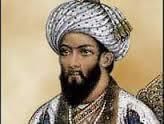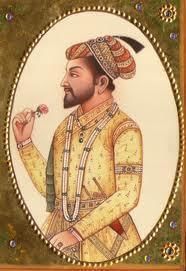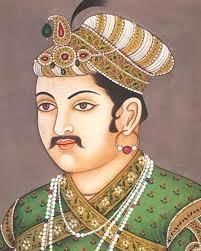The Mughal Empire Chapter Notes | History Class 9 ICSE PDF Download
| Table of contents |

|
| The Mughal Empire |

|
| Sources |

|
| The Mughal Dynasty |

|
| Administration under the Mughals |

|
| Social Developments |

|
| Mughals as an Integrating Force |

|
| Social and Educational Reforms |

|
Embark on a journey through the grandeur of the Mughal Empire, a dazzling chapter in Indian history that began with Babur’s victory at the First Battle of Panipat in 1526. Spanning over two centuries, the Mughals transformed India with their magnificent architecture, like the Taj Mahal, and a rich blend of cultures fostered by rulers like Akbar. From tales of conquest to policies promoting religious harmony, the Mughal era is a tapestry of power, art, and innovation. These notes will guide you through the empire’s rulers, administration, and societal changes, unveiling the legacy of one of India’s most iconic dynasties.
The Mughal Empire
- Delhi Sultanate’s weakness and political disunity led to Mughal rule.
- Founded by Babur after defeating Ibrahim Lodi in the First Battle of Panipat in 1526.
Sources
- Information from chronicles, foreigners’ accounts, coins, monuments, royal orders, historical letters, religious literature, and inscriptions.
Literary Sources
Key works provide details on political, social, and economic conditions:
- Tuzuk-i-Babri by Babur.
- Ain-i-Akbari and Akbarnama by Abul Fazl.
- Muntakhab-ul-Tawarikh by Badauni.
- Tarikh-i-Alfi by Mulla Daud.
- Shah Jahan Namah by Inayat Khan.
- Ain-i-Akbari, by Abul Fazl (one of Akbar’s nine gems), has five books detailing imperial household, administration, departments, servants, and bureaucrats.
Monuments
Mughals built grand structures like Buland Darwaza, Panch Mahal, Jodha Bai’s Palace, Jami Masjid, Taj Mahal, Red Fort, and Pearl Mosque.
Notable monuments:
- Humayun’s Tomb (Delhi, built under Hamida Banu Begum):
- 8.5-meter-high platform, archways on sides.
- Precursor to Taj Mahal.
Fatehpur Sikri (40 km from Agra, by Akbar):
- Grand palace, housed Akbar’s court briefly.
- Includes Panch Mahal, Buland Darwaza, Diwan-i-am, Diwan-i-khas, Jodha Bai’s Palace, Raja Birbal’s house.
Agra Fort (Agra, by Akbar):
- Red sandstone; Shah Jahan added Diwan-i-Aam, Diwan-i-Khas, Moti Masjid.
- Walls engraved with elephants, dragons, birds.
Taj Mahal (Agra, by Shah Jahan):
- Designed by Ustad Isa, white marble, high platform, four minarets.
Jama Masjid (Delhi, by Shah Jahan):
- India’s largest mosque.
Red Fort (Delhi, by Shah Jahan):
- Red sandstone and marble, on River Yamuna’s bank.
- Includes Diwan-i-Aam, Diwan-i-Khas (with Peacock Throne).
- Aurangzeb added Moti Masjid (white marble).
The Mughal Dynasty
Babur
- Descendant of Timur (father’s side) and Chengiz Khan (mother’s side).
- Ruled Farghana, later captured Kabul.
- Invited by Daulat Khan Lodi to defeat Ibrahim Lodi.
- Defeated Ibrahim Lodi in First Battle of Panipat (1526), occupying Delhi and Agra.
- Fought Rana Sanga of Mewar at Khanwa (1527), securing Delhi and Agra.
- Battle of Ghagra against Afghans was inconclusive.
- Died in 1530, laying Mughal rule’s foundation but not consolidating the empire.

Humayun
- Ascended throne in 1530.
- Defeated by Sher Shah Suri at Kannauj (1540), fled to Persia.
- Sher Shah Suri, an able administrator, built Grand Trunk Road from Peshawar to Bengal.
- Sher Shah’s weak successors allowed Humayun to conquer Kabul and Kandahar with Persian aid.
- Recaptured Delhi in 1555, ruled one year, died in 1556 after falling from Purana Quila’s library stairs.
Akbar
- Greatest Mughal ruler, ascended throne at 13, guided by tutor Bairam Khan.
- Conquered Malwa, Gondwana, Gujarat, Kashmir, Kabul, and Deccan states (Ahmednagar, Khandesh, Berar).
- Empire stretched from Kabul and Kandahar (west) to Assam (east).
- Subdued most Rajput princes except Mewar.
- Fought Maharana Pratap at Battle of Haldighati (1576); Pratap fled due to heavy wounds.
Rajput Policy of Akbar
- Recognized Rajputs’ power, seeking their cooperation to rule.
- Formed matrimonial alliances with Rajputs.
- Gave Rajput princes key court positions and mansabdari ranks.
- Reduced Hindu-Muslim tensions, fostering composite culture.
- Example: Akbar’s marriage to a Rajput princess, like Jodha Bai, strengthened ties with Rajput clans, ensuring their loyalty and integrating them into Mughal administration, promoting cultural harmony.
Jahangir
- Succeeded Akbar, inherited his qualities but had fewer military achievements.
- Married Nur Jahan, who gained influence; her relatives dominated court.
- Nur Jahan’s name appeared on royal farmans and coins.
- Installed ‘Chain of Justice,’ a golden chain for anyone to pull and seek justice.
- Conquered Mewar.
- English ambassadors Captain Hawkins and Sir Thomas Roe visited, seeking trade concessions for East India Company.
- Portuguese gained power during his reign.
Shah Jahan
- Ascended throne after power struggle, defeating Nur Jahan’s candidate and royal princes.
- Portuguese strengthened their position; Dutch East India Company (formed 1602) set up trading units in Surat, Ahmedabad, Cochin, Patna, Agra, Negapatnam.
- English East India Company later became dominant.
- Built numerous monuments, draining treasury; taxes raised to half the produce.
- Long reign brought peace and stability.
- Lost Kandahar, never regained.

Aurangzeb
- Ascended throne in 1659 after fighting brothers and father.
- 50-year reign marked by wars and Deccan annexations, spending last 25 years in battles.
- Reversed Akbar’s religious tolerance, reimposing jizya on non-Muslims.
- Died in 1707, after which Mughal Empire began to decline.
Later Mughals
- Bahadur Shah succeeded Aurangzeb in 1707.
- Faced battles against Afghan rulers and English East India Company.
- Shah Alam II defeated by English in Battle of Buxar (1764).
- East India Company became dominant; Mughal power waned.
- Bahadur Shah Zafar, last Mughal ruler, lost after 1857 revolt; sons and grandsons killed, exiled to Rangoon, died in 1862, ending Mughal Empire.
Administration under the Mughals
- Highly centralized, with kings as God’s vice-regents, heading Executive, Legislature, Judiciary, and Army.
- Kings expected to be benevolent.
- During Babur and Humayun, vakil (Prime Minister) had wide civil and administrative powers, reduced under Akbar.
- Diwan managed revenue, tracking state income and expenses.
- Qazi led judicial department.
- Under Akbar, empire divided into 12 subhas (provinces), then sarkars, and mahals.
- Subedar (Governor) maintained provincial law, order, and revenue collection, assisted by provincial diwan.
- Other officials: faujdar, kotwal, bakshi, sadrqazi, muhtasib, all appointed centrally.
Mansabdari System
- Mansab meant office or rank; holder called mansabdar.
- Mansabdars maintained horsemen or soldiers based on rank.
Features:
- Ranks assigned based on work; lower ranks maintained 10 horsemen, highest up to 7,000.
- King appointed, promoted, or dismissed mansabdars.
- Paid via jagirs, using revenue to pay horsemen.
- Mansabdars collected fixed revenues, had no administrative control over jagirs.
- Under Aurangzeb, mansabdar numbers grew, causing jagir shortages.
Example: A mansabdar with a rank requiring 1,000 horsemen might collect revenue from his jagir to pay their salaries, ensuring the emperor had a ready army without direct financial burden.
Land Revenue System
- Raja Todar Mal, Akbar’s revenue minister, introduced reforms.
Features:
- Land surveyed, measured with bamboo string and iron rings.
- Cultivable land classified: extremely fertile, fertile, middling, bad.
- Revenue based on 10-year average produce, fixed at one-third, payable in cash or kind.
- State offered loans for crop failures due to droughts or floods.
Social Developments
- Society contrasted rich and poor.
- King held highest social rank; nobles and aristocrats lived luxuriously.
- Middle class included landlords, merchants, traders, rich peasants.
- Lowest strata, the majority, faced hard lives, toiling daily, oppressed by revenue collectors.
- By Shah Jahan’s reign’s end, peasants suffered from high taxes and provincial governors’ oppression.
- Society split into Hindus and Muslims; Hindus enjoyed more freedom under Akbar.
- Mughal society reflected religious harmony and coexistence.
Mughals as an Integrating Force
Akbar’s religious tolerance policies promoted social and religious harmony.
Measures:
- Abolished jizya (poll tax on non-Muslims).
- Ended forced conversion of prisoners to Islam.
- Included Hindus in nobility, giving Rajputs high mansabs.
- Built Ibadat Khana (Hall of Prayer) at Fatehpur Sikri in 1575 for religious discussions with theologians of various faiths.
- Issued mazhar, declaring himself final arbitrator in religious matters.
- Founded Din-i-Ilahi, emphasizing God’s oneness, courage, loyalty, justice, and sulh-i-kul (peaceful coexistence).
- Established translation department, translating Sanskrit, Arabic, Greek works (e.g., Ramayana, Mahabharata, Gita) into Persian.
Social and Educational Reforms
- Akbar banned sati and legalized widow remarriage.
- Discouraged child marriages, setting minimum marriage ages: 14 for girls, 16 for boys.
- Required consent of bride and groom for marriage.
Educational reforms:
- Emphasized secular subjects (mathematics, logic, history, astronomy) alongside religious texts.
- Established translation department for Sanskrit, Arabic, Greek works into Persian.
Female education existed; rich girls had private tutors, middle-class girls attended same schools as boys.
|
14 videos|59 docs|16 tests
|
FAQs on The Mughal Empire Chapter Notes - History Class 9 ICSE
| 1. What was the significance of the Mughal Dynasty in Indian history? |  |
| 2. How did the administration function under the Mughals? |  |
| 3. What social developments occurred during the Mughal Empire? |  |
| 4. In what ways did the Mughals act as an integrating force in India? |  |
| 5. What were some social and educational reforms introduced during the Mughal period? |  |




















